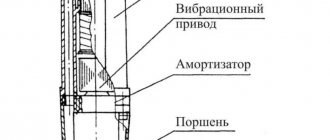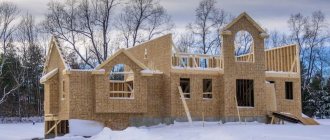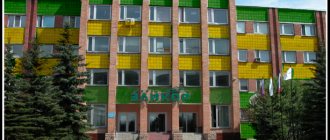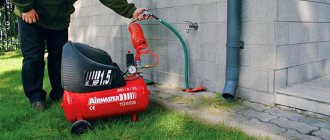There is an opinion that outdoor construction work, including the installation of a fence, must be completed before the onset of cold weather. To the question: “Is it possible to install a fence in winter?” – the majority of ordinary people will answer negatively. Indeed, it is more comfortable to do construction work in the warm season. But the need to install fencing arises regardless of the time of year or the comfort of performing the work. The question of the feasibility of winter installation depends on the type of fencing and the type of foundation. You will find all the answers to questions that arise during the winter installation of fencing in this material.
Do they put up fences in winter?
At first glance, mounting and installing fences in winter seems like a waste of time. Owners of private property are interested in whether it is possible to make a fence in winter, because frozen soil complicates the installation of support posts. Experienced builders know that pouring pillars in winter will not end well. In the spring, after the soil thaws, the pillars may warp, pulling the structure along with them. Driving poles into frozen ground is not an easy task, and it’s almost impossible to do it well. Whether it is possible to install a fence in winter and how to do it efficiently and at minimal cost will be discussed in the following sections of the article.
Implementation of piles
To install this type of fencing, it is necessary to drive screw piles into the soil, which are screw pipes with screw-like sections that are located in the base area. Thanks to the presence of a screw, the piles can penetrate even the most dense (including frozen) soil. Next, after installation, the cavity inside the pipe is filled with concrete mortar.
This is what screw piles look like
Advantages and disadvantages of winter installation
To answer the question - do they put up fences in winter - it is worth familiarizing yourself with the positive and negative aspects of carrying out construction work in winter.
The advantages of installing a fence in winter include:
- decreased demand for construction work in winter allows you to avoid waiting for the necessary equipment and construction crew to become available;
- seasonal reduction in the cost of building materials reduces the cost of building a fence;
- the risk of damaging plants growing in flower beds and beds in spring and autumn disappears;
- It is easier to transport construction and bulk materials on frozen ground;
- availability of seasonal discounts and promotional offers in companies specializing in the manufacture and installation of fences.
In pursuit of saving money, do not forget that installing a fence in winter is associated with additional difficulties.
In addition to the need to wear warm, bulky clothes, there are a number of disadvantages of winter installation of a different nature:
- freezing of the upper layers of the soil complicates the process of drilling holes for installing support pillars;
- at low temperatures, water freezes, which affects the quality of concrete polymerization;
- the need to use expensive additives against freezing of concrete mortar;
- difficult weather conditions with snow make it difficult to install a fence;
- the need to attract special equipment to develop frozen soil for construction;
- difficulties in compacting the space around the supports with frozen soil;
- the impossibility of using a strip foundation or the method of driving in pillars;
- short daylight hours prolong the work period.
Before installing a fence in winter, you should not only weigh the pros and cons, but also choose the right method for constructing the foundation and installing the main structures.
Erecting a fence in the spring
The main problem with spring construction may be the high groundwater level. At the same time, you can even install a fence “deep in water.” Typically, the soil, saturated with water and loosened after winter heaving, is soft enough, so driving a steel pipe to the required depth is possible without drilling a pit. You should only take into account the aggressiveness of the soil and choose the right material for the support or its anti-corrosion coating.
Methods for installing poles in winter
Considering the difficulties of winter construction, choosing the right technology and materials helps to build fences in winter. Experts place the main emphasis on the method of installing supports.
Driving piles
A pile foundation involves the use of screw piles as pillars. The piles consist of a main trunk and a load-bearing part in the form of helical blades. The process of deepening is the screwing of piles with additional pressure from above. The screw-in depth is at least two and a half meters, at which they are securely fixed in hard layers of soil. Before screwing, it is necessary to prepare the hole into which the pile is inserted. This task, with skill, can be handled by one person using his own strength and a hydraulic device.
After installing all the piles, the protruding part is cut to the same level relative to the soil surface. Afterwards, concrete is poured into the barrel cavity, and the end parts of the supports are installed.
Concreting
This method of installing pillars is the most expensive of all. The main costs fall on the purchase of additives that increase the frost resistance of concrete.
The manufacture of additives that promote polymerization of the solution in frost involves the use of:
- sodium nitrite;
- potash;
- calcium nitrite.
Among the ready-made additives, the following solutions have excellent plasticizing properties:
- "Cementola";
- "Betonsana";
- "Lignopana";
- "Hydrozima".
The process begins with drilling wells more than a meter deep to overcome the frost line. Supports are driven into the holes 0.2-0.3 m deeper than the drilled hole. The prepared building mixture is poured around the leveled pillars.
Butting
An alternative to a poured strip foundation in winter is the butting method. Work begins with making holes in the ground using a motor drill. The diameter of the hole must exceed the diameter of the post by at least 0.2 m. Posts are installed in the finished holes. After the supports are leveled, gravel, crushed stone, and sand are poured into the voids. After forming a twenty-centimeter layer, the rubble is filled with water and compacted.
Butting is an alternative method to strip foundation
Use of antifreeze additives for concrete
Pouring the foundation in winter is achieved using simple but relatively costly methods. Warming up the concrete solution during hardening is a complex process, especially if the fence being installed has many support pillars. This method involves large monetary and energy costs.
The method of increasing the frost resistance of casting compositions through special additives becomes more economical and convenient. Hardening of the concrete solution at sub-zero temperatures is ensured by anti-frost additives. Their proportions:
- to -5°C – 5-6% of the total amount of the mixture;
- -5-10°C – 6-8%;
- below -15°C – 8-10%.
There are 5 types of antifreeze additives:
- Plasticizers. This group includes naphthalene and melamine resin sulfates, organic polymer acrylates. Such components not only make the solutions waterproof and frost-resistant, but also ensure the mobility of concrete mixtures, and this facilitates the construction process. A mixture with such additives fills any form and is used for different types of concrete. Plasticizers, by absorbing water vapor from the air, make it possible to reduce the volume of added liquid when making concrete. They prevent delamination and cracking. In addition, plasticizing additives increase the strength of concrete by 25%.
- Strengthening additives. These include calcium chloride, calcium nitrate, aluminum and iron sulfates. Due to them, the concrete mixture hardens faster and becomes stronger. They are used in the first 3 days of hardening - it is at this time that they demonstrate maximum effectiveness.
- Corrosion resistant additives. Protect reinforced concrete fences from oxidation and low temperatures. Thanks to the properties of these components, the service life of concrete increases and the material becomes resistant to aggressive substances.
- Mobility regulators - such additives extend the time of use of the prepared solution if long-term concreting is expected or if the composition needs to be transported over long distances.
- Frost-resistant - they reduce the crystallization temperature of water, as well as the setting speed, without affecting the formation of concrete.
There are also combined supplements containing two or more components. They improve several properties of concrete at once. For example, they make it waterproof, more durable, frost-resistant, durable, and also protect against mold formation.
Due to such additives, concrete can be worked at temperatures down to -20°C, its strength increases without additional heat treatment, and the final strength characteristics of the material increase by at least 10%. In addition, they improve the adhesion of concrete to reinforcement and metal elements.
Required tools and materials
In winter, fences are built with lightweight structures suitable for installation in the cold season:
- temporary shield fences;
- fences using metal mesh, lattice;
- forged structures;
- stacked panel fences.
The option with the least subsequent deformation is a fence made of corrugated sheets; in winter, its installation does not cause difficulties or excessive material costs.
To install the fencing structure, it is necessary to prepare equipment and materials in advance:
- metal welding machine;
- power tools – drill, grinder;
- hand tools – hammer, sledgehammer, tape measure, shovel, pliers, level;
- motor drill
Problems and their solutions
Building a fence in frosty conditions is often fraught with difficulties. When solving problems, you should carefully study ways to optimize the process:
- The correct method of installing supports reduces the risk of subsequent deformation of the structure.
- The use of anti-frost additives that improve the polymerization of mortars makes concreting easier.
- When the ground freezes, it is advisable to use a motor drill.
Building a fence in winter is a troublesome task. To save money, time and health, it is better to turn to specialists.
Concrete supports
The process of pouring a foundation for a pillar Concreting is performed using several methods. Molds for making fence posts? Before deciding how to concrete fence posts, you need to study the features of this process.
Let's look at how to properly concrete fence posts and why. This work requires a serious approach, since the strength of the fence and its service life depend on the quality of execution.
This type of support has its advantages and disadvantages. It will not become loose or corrode after heavy rainfall, which will significantly increase its service life. However, for land plots where groundwater lies close to the surface, this method may not be suitable.
Because the concrete will crack and even be squeezed out of the ground.
Based on the design of the fence, the concreting technology is selected. It can be complete or partial.
Partial concreting is used for light soils in order to obtain the strongest and most reliable support for the structure. The technology itself is similar to that used for driving. The only difference is that the driven support is sprinkled with a little crushed stone and filled with mortar. There is one important point.
You need to know to what depth the fence posts are concreted.
If the partial concreting method is used, the depth of the hole should be equal to half the length of the pipe intended for the underground part. The width of the hole should be 10-12 cm larger than the cross-section of the support.











